A household in 11 boxes | OCTOBER 7
Already a few months back, the dentist Max Isidor Mahl and his wife, Etta, a textile worker, had submitted their visa application to the American consulate in Vienna. Ever since, they had been waiting. Etta was a native of Poland, Max Isidor a native of Ukraine. The American immigration quotas for both these countries were already filled. But time was of the essence: this bill shows that already in October, the Mahls had their entire household shipped to the United States in order to bring it to safety. Transportation from Vienna to Hamburg and then, on a freighter, to New York was expensive. It cost almost 800 Reichsmarks for the couple to send the 11 boxes containing their household effects out of the country.
Paragraphs and paragraphs… | SEPTEMBER 27
The lives of many Jews had become undone within the span of half a year, through occupational bans, Aryanization, dispossession, and denaturalization. After the Anschluss, many Austrian Jews again found themselves in an unstable and chaotic situation. It was all the more cynical then that many of them seemed to be confronted with a complicated, in some ways pedantic bureaucracy regarding visas. A September 27th, 1938 letter from the American Consulate General to Tony (Antonie) and Kurt Frenkl gives example of this: “Your visa application can be accepted at the earliest within months.” The quotas for Central European immigrants were filled. In order to be put on a waiting list for a visa, applicants had to fill in a pre-registration form. And, in order to “avoid delays,” an individual affidavit had to be submitted per person. So Tony and Kurt had to wait even longer, bracing themselves for the next bureaucratic hurdle.
Waiting yet again | SEPTEMBER 7
Appointed date: uncertain. The American Consulate General at Breslau didn’t even tell Carl Proskauer and his family a date in the distant future on which they could once again apply for a U.S. visa. The quota was already full. The American quota determined how many persons per country of birth (not per country of citizenship!) were allowed to immigrate to the United States annually. In the year 1938, the number of visa applications from Germany rose rapidly. For individual cases such as that of Curt Proskauer and his family, this meant yet another round of excruciating waiting periods and exhausting paperwork, since many documents, which the Breslau dentist and historian of medicine had already submitted to the American Consulate General, would expire after a certain period. Whether Curt Proskauer could apply for a visa again by then? Uncertain!
Keep your tired | JULY 19
On July 19, the Jewish Telegraphic Agency reports that the United States Consulate General in Berlin stopped accepting new visa applications. According to the Consulate, about 2000 people have applied for visas per month. Due to the high demand, the Consulate prioritizes clearing the files of the applications on hand for the time being. The oftentimes hard-won affidavits and other documents of new applicants will not be accepted anymore, though new applicants will be put on a waitlist. In consequence, this means that Jews who are planning to leave Germany or the annexed Austria for the USA will have to wait until next year to get a chance at obtaining a visa. It can be assumed that the 60,000 to 70,000 applications by emigrants from Germany/Austria which are waiting to be processed will already significantly surpass the annual US quota of 27,370 visas for immigrants from the Deutsches Reich.
No new arrangement for siblings | DECEMBER 26
Due to the perception prevalent since the middle of the 19th century that immigrants, preferably from Europe, were needed to populate the vast expanses of Argentina, the country’s immigration policy was comparatively generous. But already following WWI, the country’s needs for manpower were perceived as saturated, and by the 20s, administrative barriers to immigration were put up. With victims of Nazi persecution seeking refuge, immigration policy was tightened even more. Nevertheless, many thousands of German Jews as well as political adversaries of the regime found refuge in Argentina. Among them was Max Busse. His sister, Anna Nachtlicht, had heard about plans of the Argentine government to ease immigration and make it possible to request permits for siblings. Max immediately went to make inquiries, but the results were sobering. In this December 26th letter, he is forced to tell her that no such plans seem to exist. Relatives in France had offered the Nachtlichts to stay with them to wait for their visas for a third country. Perhaps, Max suggests, it would be easier to apply from there.
At the mercy of Nazi authorities | DECEMBER 24
Not long after power was handed to the Nazis, the motto “Police – your friends and helpers,” which already during the Weimar Republic often reflected a hope rather than reality, lost any hint of meaning for opponents of the regime and for the country’s Jews. A law introduced as early as February 1933 stipulated that police officers who resorted to the use of firearms against people perceived as enemies of the regime were to go unpunished. As part of an unholy trinity, in tandem with the SA and SS, the police quickly became an instrument of Nazi terror. Therefore, obtaining a police clearance certificate was probably not the easiest of the requirements of would-be immigrants applying for US visas. On December 24th, 1938, this important document was issued to Ernst Aldor, a resident of Vienna.
Bureaucracy without empathy | DECEMBER 23
America was struggling with economic difficulties, and an unfavorable attitude towards “aliens” prevailed in Congress. Among much of the populace, the idea of admitting large numbers of Jewish immigrants was not popular, and President Roosevelt was not inclined to relax America’s immigration restrictions. Thus, when Alice Rice of Virginia Beach tried to facilitate the immigration of her Czech relatives, she received the standard answer from the acting chief of the Foreign Office’s visa division, Eliot B. Coulter. He emphasized the importance of proving that the applicants were not likely to become “public charges” and pointed to the provisions of the 1917 Immigration Act, which, in addition to economic prerequisites, made immigration dependent on a host of conditions grounded in considerations of a political, racial, moral and health-related nature, as well as stating that a person 16 or more years of age was eligible for immigration only if literate. Despite the valiant efforts of Frances Perkins, Secretary of Labor, whose department was in charge of immigration and naturalization issues at the time, US policy was not revised to accommodate the needs created by the wave of refugees coming out of Nazi Germany. Interestingly, one of the justifications for this was that the German quota was actually never filled – without mentioning, of course, that this was a result of the “public charge” provision, which made it impossible for many German Jews, who had been systematically driven into poverty by the Nazis, to successfully apply for visas.
Help among friends | NOVEMBER 28
Willy Nordwind, co-chair of the Boston Committee for Refugees, tirelessly endeavored to save Jews from the grip of the Nazis by helping them immigrate to the United States. Himself an immigrant from Germany and familiar with the requirements, he helped organize affidavits and saw to it that newcomers with fields of expertise as heterogeneous as “tobacco and clothing retail business,” “tourism,” “expert buyer and salesman of hosiery,” and “wholesale fish dealer” found employment in America. Most of the people he helped were total strangers to him, but some of his beneficiaries were personal acquaintances. On November 28th, 1938, his friend Seppel pleads with Nordwind to find a special arrangement for him that would speed things up. Requests for visas had risen sharply since the pogrom night of November 9th to 10th (later known as “Kristallnacht” or “Night of Broken Glass”), and the usual waiting period for the processing of affidavits was far too long.
What is already bad gets worse | NOVEMBER 19
The Intrators had been forced to flee once before: the anti-Jewish climate in their native country, Poland, had caused Rachel (Rosa) and Jakob in 1905 to make Berlin their home. Their son Alexander, born the same year, later became a successful concert violinist. Gerhard, five years his junior, went to law school, but the Nazis had hardly been brought to power when they began to systematically push Jews out of the legal professions. In light of the hopelessness of pursuing a juridical career in Germany, the 27-year-old emigrated to the US in 1937. Now he was making massive efforts to bring his parents. On November 19th, his father reported on the arrival of the affidavit which was needed for immigration. However, he added, they did not expect to receive their visas any time soon. Meanwhile, their circle of relatives and friends was getting smaller and smaller. Some were being forced by the Nazis to return to Poland, others simply disappeared.
Just help—no matter from where | NOVEMBER 16
Martha Lippmann, the widow of a wool merchant in Stolzenau/Weser in Lower Saxony, and her mother were the last family members left behind in Germany when the November pogroms (later known as “Kristallnacht” or “Night of Broken Glass”) ravaged German Jewry. Her daughter, Gertrude, fled to Belgium; her older son, Erich, to America; and her younger son, Hans Martin, to England. News of the wave of anti-Jewish violence increased the urgency with which emigrants attempted to intercede on behalf of loved ones left behind in Germany. In a letter dated Nov. 16th, Max Stern, Gertrude’s husband, tells Erich about a planned appointment with a Belgian lawyer on behalf of Martha Lippmann, the goal of which is to obtain a temporary visa for her. Erich himself had contacted William Dodd, the former US Ambassador to Germany, thanks to whom he himself had made it to the US. But so far this appeal was to no avail.
The power of hope | NOVEMBER 1
In the absence of closer relatives in America, the Metzger family of Vienna turned to their first cousin once removed, Leo Klauber, Esq., in Brooklyn, for help. Mr. Klauber was unable to personally procure affidavits for his Austrian relatives, but he promised to endeavor on their behalf. The extent of the relief caused by his promise is palpable in Eva Metzger-Hohenstein’s reply of November 1, 1938: after months of fear and despair, the Metzgers felt reinvigorated by the realistic hope for emigration, thanks to their cousin.
To save his mother | OCTOBER 30
Thanks to the intervention of William E. Dodd, U.S. Ambassador to Germany from 1933 to 1937, Erich M. Lipmann managed to immigrate to the U.S. in 1936. By the time the 26-year-old made this impassioned plea to Dodd to help his mother, Martha Lipmann, leave Germany and join him in Cleveland, he had already spent two years in the US. The letter displayed here is but one in a long series of increasingly frantic attempts by Lippmann to save his mother. Over the course of several years, he tirelessly approached anyone who might be of help.
Denied at the border | OCTOBER 10
In fact, Anneliese Riess was an archeologist. But after getting her PhD in Rome in November 1936, she had no chance as a foreigner to find employment in her dream profession. Therefore, she took a course in pediatric nursing in Geneva in 1937 and then returned to Rome. When the fascist government in Italy declared that foreign Jews were to leave the country within half a year, the school in Geneva agreed to employ Anneliese as an intern until the arrival of her US visa. However, due to Switzerland’s xenophobic and anti-Semitic immigration policy, she was denied entry at the border. In a letter from the school dated October 10th she was informed that such cases were so common among the students that the director of the school, Miss Borsinger, was not able to do anything for her to obtain a residence permit. She had, however, enclosed a letter to the consulate, testifying that Anneliese Riess was urgently expected at the nurse’s training school – albeit as a student. This, the letter states, was her only chance to be allowed entry.
A new attempt | SEPTEMBER 9
Leo Abraham, his wife Elsa and their kids Bertel and Hannelore should have been in Palestine for a long time and not still stuck in Altenkirchen in the Rhineland in 1938. Leo had begun to collect the forms and documents necessary for emigration soon after the Nazis came to power. However, due to a car accident, Leo suffered injuries to such an extent that emigration seemed impossible for a long time. The visa for Palestine expired. Now the Abraham family was making a second attempt. Leo Abraham’s cousin David Landau, a U.S. citizen, obtained an affidavit for the Abrahams in September 1938. As a lawyer with his own practice in Scranton, Pennsylvania, Landau had a good income at his disposal. This was an important requirement, since Landau himself had to assume responsibility for all financial necessities of the Abraham family.
A last class photo | SEPTEMBER 4
Gisela Kleinermann (top row, right) had recently turned 10 years old. With her arm around her classmate, she looks, with a slight smile, into the camera. At this time, Gisela may already have known that she will not be part of this class of the Jewish school in Dresden any longer. In late summer 1938, her mother Erna prepared her family’s emigration to the United States. Step by step, in recent years the Nazis forced segregation in public schools. In many Jewish communities—as well as in Dresden—new Jewish schools were founded as a result.
The main thing is get out | AUGUST 31
Ludwig Gottschalk of Bonn did not mince words in this August 31st letter to his friends, Betty and Morris Moser, in New York. By now, Jews in Germany were living in such a state of demoralization and constant fear that the wish to leave was omnipresent, regardless of what was to be expected “outside.” According to his information, the U.S. Consulate General in Stuttgart was so overburdened by all the applications for immigration that new affidavits were currently not even being processed. The Gottschalks already had a waiting number and expected to be able to emigrate relatively soon. Meanwhile, they were learning English. Ludwig alluded to the changes that had occurred in Germany since his friends had left by calling them “Israel” and “Sara.” On August 17th, a decree had been issued forcing Jews to add one of these names to their given names in order to make their Jewish identity obvious.
Coercion | AUGUST 22
Within the first few months after the annexation of Austria by the Nazis, Dr. Joachim Weichert, a Czech-born lawyer, lost most of his clients. He had no choice but to compile the documents necessary for emigration. In June, the family was notified by the Consulate General of the United States that valid affidavits and other documents had arrived for them from America. Nevertheless, due to the fact that the Czech quota was exhausted for the time being, they were put on a waiting list and told they wouldn’t receive visas for the next eight months. By August 22nd, it had been almost two weeks since Dr. Weichert was ordered by the Devisenstelle (financial administrative office in charge of supervising monetary transactions and emigration) in Vienna to submit within one week an itemized list of his assets. In this official communication from August 22nd, he is given an ultimatum of three days, after which criminal measures will be taken.
For an 18th birthday, current events | AUGUST 21
Hugo Jellinek was proud of his daughter Gisella, who had become a glowing Zionist during Hakhsharah and just months before had immigrated to Palestine as part of a group of daring youngsters. For her 18th birthday, not only did he send his first-born daughter congratulations, he also shared his thoughts about current events with her. From his new vantage point in Brünn/Brno (Czechoslovakia), where he had fled from Vienna after a warning, German maneuvers alongside the Czechoslovakian border were worrying him. But he was convinced that, unlike in the case of Austria, the Wehrmacht would face fierce opposition. He felt very bitter about the suspicion of and lack of solidarity with needy Jewish refugees among wealthier members of the Jewish community in Brno. Moreover, he was greatly worried by the eviction notices Austrian Jews were receiving, among them his relatives. Among all the worry and complaint was a silver lining, an acquaintance with a woman.
Take a number | AUGUST 6
Jews were hardly the only “undesirables” the US Immigration Act of 1924 aimed to keep out of the country. When the law was introduced, efforts to exclude certain nationalities, especially Chinese, Japanese, and other Asian immigrants, had been going on for half a century. In the early 1920s, a quota system was introduced that favored immigrants from Northern Europe. The quotas were not adjusted to address the severe refugee crisis created by the persecution of Jews by Nazi Germany. Even for nationals of the favored countries of origin, just doing all the paperwork to get on the waiting list for an American visa was a major headache, and the waiting could be demoralizing. As documented by this ticket issued to Helina Mayer in Mainz by the US Consulate General in Stuttgart, applicants could expect to be summoned for examination according to their number in line, provided they had submitted “satisfactory proof” that their livelihood in the US was secured.
Evicted from Red Vienna | JULY 14
For a dyed-in-the-wool social democrat like the journalist, translator and writer Maurus (Moritz) Mezei, the changes that quickly took hold in Austria after the country’s unimpeded annexation by Nazi Germany must have been doubly troubling. During the period known as “Red Vienna,” the first-ever period of democratic rule in the city from 1918 to 1934, the Mezei family had moved to the “Karl-Marx-Hof,” a public housing project. Starting in 1938, “non-Aryan” families, including the Mezeis, were threatened with expulsion from the compound. Tenant protections initially remained in place for Jews, but they no longer applied to public housing. On June 10, Mezei had applied for immigration to Switzerland, but the reply, written on July 14, was negative. Only if he was to procure an immigration visa from a country overseas would Swiss immigration authorities reconsider his case and possibly grant temporary asylum.
Anne knows better | JUNE 12
Leaving behind an increasingly antisemitic Germany, the Frank family of Frankfurt am Main fled to the Netherlands shortly after the Nazis rose to power. They settled on Merwedeplein in Amsterdam’s River Quarter, where more and more German-speaking immigrants were finding refuge. So large was the influx of Jews that some in the Dutch Jewish community were worried it would affect their standing in society and cause antisemitism. The Franks’ older daughter, Margot, went to school on Jekerstraat. Anne attended the Sixth Montessori School, a mere 5 minutes away from the family home. Fifteen of her classmates were Jewish. She loved telling and writing stories. Anne was curious, demanding, interested and very articulate. As her good friend Hanneli Goslar’s mother would say, “God knows everything, but Anne knows better.” In 1938, Anne’s father, Otto, applied for immigration visas to the United States. June 12 was her 9th birthday.
Lifesaver | JUNE 4
Close to 50 years before issuing an affidavit of support for his nephew, Karl Grosser, in Vienna, Frank W. Fenner had himself immigrated to the United States from Europe. A restaurant and confectionery owner in Mendon, Michigan, he pledged to support his young relative until the 26-year-old became financially independent. Finding a sponsor was a key prerequisite for obtaining an immigration visa that was often hard to fulfill. The visa process began by registering with the nearest US consulate, at which point a number on the waiting list was assigned. The length of the list depended on the number of Jews from a given country allowed to enter the US according to the quota system that had been in place since 1924. Despite the severe refugee crisis, quotas were not raised in 1938. During the waiting period, applicants had to procure all the required documents as well as certified copies. Prospective immigrants were lucky if their documents were still valid when their numbers came up.
Monetary hurdles | MAY 4
Before Martha Kaphan could travel to Mandatory Palestine, she had to deposit the considerable amount of 800 Reichsmark at the Dresdner Bank. The Reich Office of Foreign Exchange Control, which played a major role in the exploitation of Jewish emigrants, demanded the sum for the issuance of her tourist visa. Thousands of Jews tried to enter Palestine illegally by means of tourist visas with the intention of applying for permanent visas later. Apparently, Martha Kaphan did not emigrate for long. The British Consulate confirmed her departure on December 24, 1938. The deposit was paid on December 29, 1938 in Breslau, and the account was closed on January 10, 1939.
As far away as possible | MARCH 28
More than two weeks had passed since the Nazi takeover in Austria. The initial shock and disbelief among Jews had given way to despair and panic. Many reacted by seeking information about visa requirements for countries like the United States, Great Britain and Australia, which promised a safe haven and sufficient distance from the dramatic new situation in Austria. Between March 24 and 28, the Australian consulate alone received 6,000 applications for immigration—a number which considerably exceeded the country’s official immigration quota.
Without health, no immigration | FEBRUARY 21
In light of the looming danger, a young jazz musician from Breslau, Werner Dambitsch, considered various options for emigration. Like many others, he viewed Cuba, a destination for which it was significantly easier to obtain a visa, as a “waiting room” on the way to the final destination for many, the United States. While his application for immigration to Cuba was being processed, Dambitsch, to be on the safe side, seems to also have applied for a visa at the Colombian Embassy in Berlin. The document presented here is a doctor’s notice written by the doctor of the Colombian Embassy and attesting the perfect health of the prospective emigrant, one of the indispensable preconditions for receiving a visa.
Second opinion | FEBRUARY 2
Months after leaving Germany, 12-year old Herbert Friedmann (later Freeman) was still in Zurich waiting to reunite with his family already in the USA. Because of the previous, apparently intentional, misdiagnosis at the US consulate in Stuttgart stating that the boy was a “carrier of tuberculosis,” he had not been able to immigrate with his mother and brother. Finally, on February 2, 1938 a local physician attested to the boy’s “significantly above average” state of health, ascribing the previous diagnosis to an error. Ironically, the physician who issued this critical medical certificate was Dr. Ernst Hanhart, a geneticist and eugenicist who during the Nazi period published extensively on “racial hygiene” and wrote articles in support of the forced sterilization of deaf-mutes.
An arbitrary ordeal | JANUARY 12
Herbert Freeman was born Herbert Friedmann on December 13, 1925 in Frankfurt/Main, Germany. His father, Leo Friedmann, immigrated to the United States first. Herbert, his mother, and his brother applied for a US visa in Stuttgart. During the obligatory health check-up, the perfectly healthy Herbert was diagnosed as a “tuberculosis carrier” and was unable to join his mother and brother on their journey to the United States in 1936. After repeated unsuccessful attempts, in order to circumvent the Stuttgart US Consulate, 12-year-old Herbert was sent to Zurich (permission to file an application outside Germany was obtained in no small part thanks to the intervention of Albert Einstein). The letter was written during Herbert’s stay in Switzerland. He mentions his upcoming visit to the US Consulate and reapplying for the visa, and describes his days while separated from his relatives.



































